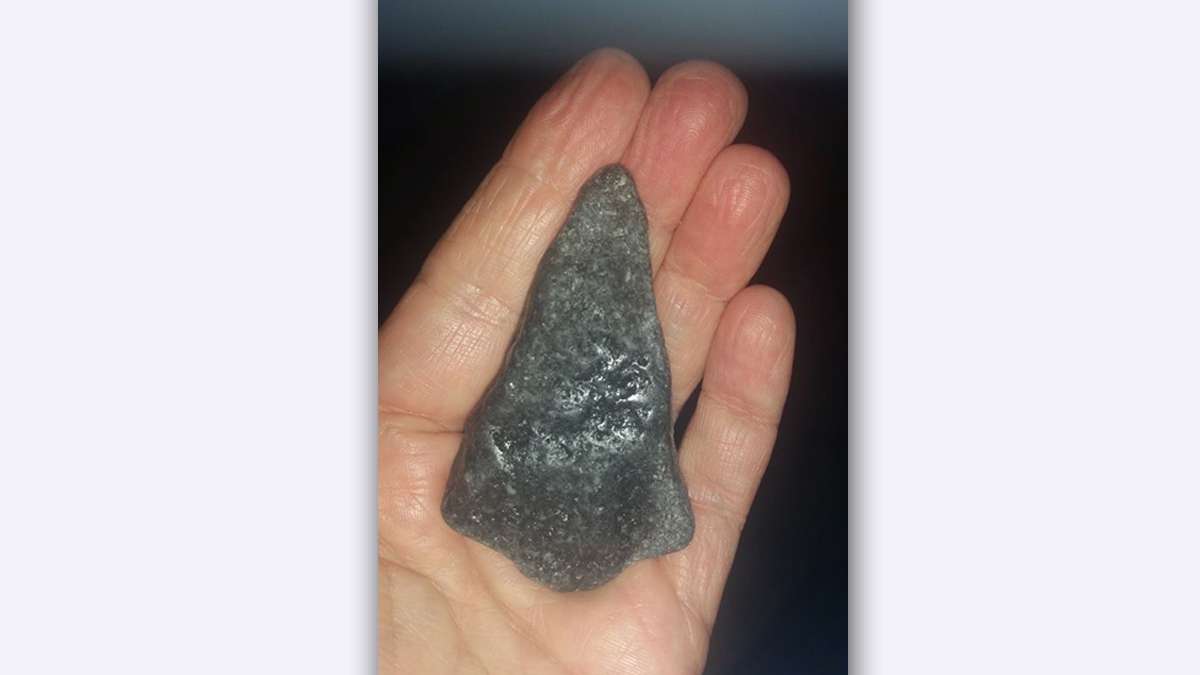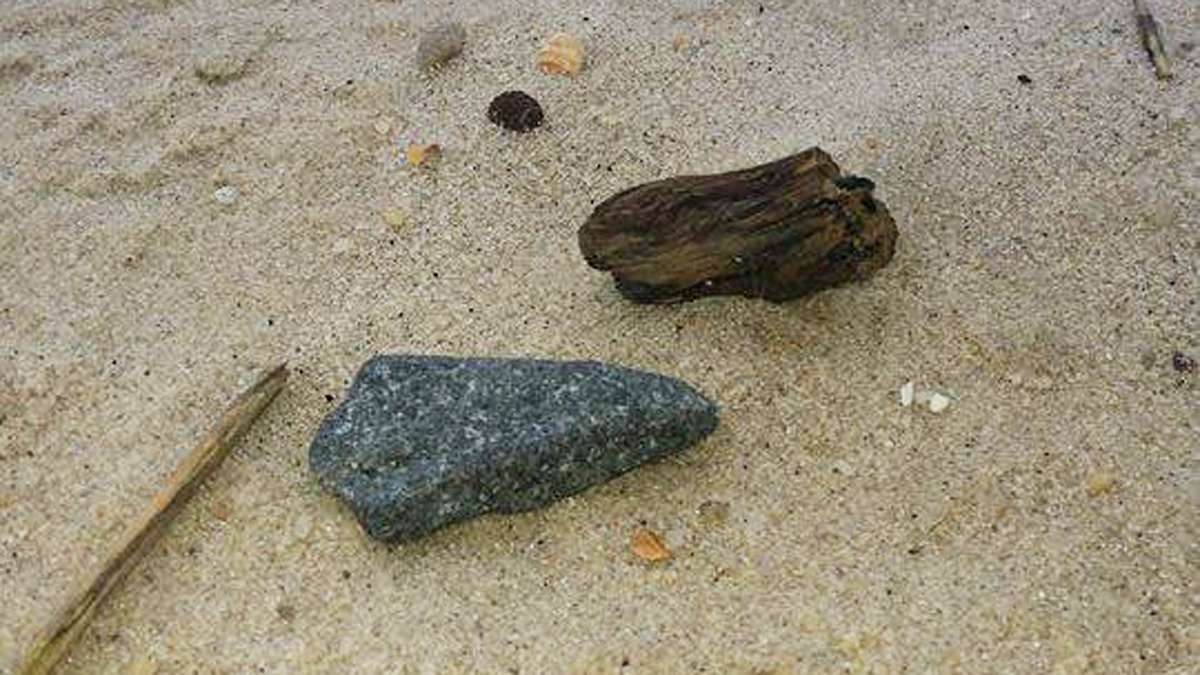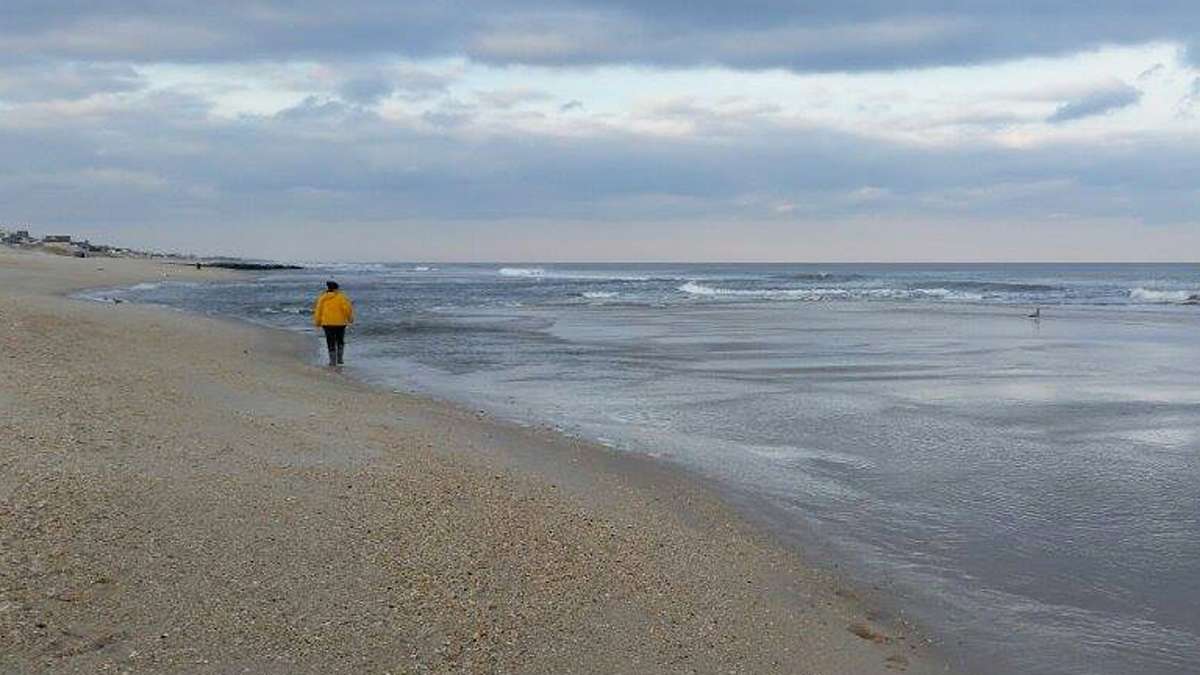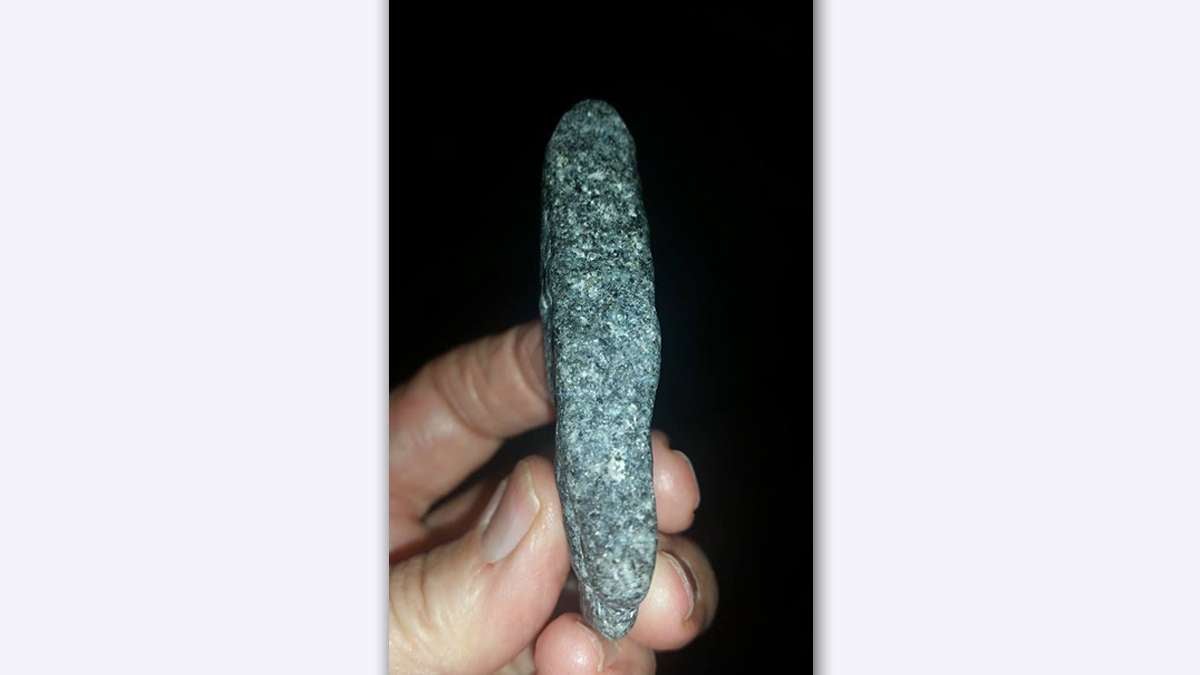Lavallette beachcomber finds prehistoric projectile point
Denise Wirth regularly strolls on the beach, a healthy habit that she says is akin to mediation.
Sometimes the Lavallette resident finds interesting things like sea glass, discarded pieces of glass from bottles that tumble on the ocean floor until they’re polished into colorful gems.
But last Sunday, Wirth came across something she had never seen before, a stone a few inches long but in somewhat of a triangular shape.
“I was walking along the high tide line, and I saw (it),” the Ocean County native during a telephone interview. “I picked it up and said, ‘I’m going to take it home.'”
She snapped a few photos and sent them to Dr. Gregory Lattanzi, the Assistant Curator at the New Jersey State Museum’s Bureau of Archaeology & Ethnography in Trenton.
By every measure, Wirth’s instincts to learn more were rewarded when Lattanzi identified the stone as a prehistoric Koens-Crispin artifact — a “projectile point” that dates back to the Late Archaic period of 1900-1700 B.C.
“A projectile point is defined as a worked stone used as an arrow, dart, or knife,” Lattanzi said in an email. “It is typically hafted onto a wooden handle or longer spear.”
This is not the first time Wirth has found odd and interesting objects on the beach.
After a nor’easter in December, she stumbled upon a mummified bottlenose dolphin, and for the holidays, she built a towering Christmas tree out of driftwood and placed it on the Lavallette beach.
“I’m so drawn to the beach,” Wirth said. “I’m an avid long distance walker, so I use the beach for my track.”
Who knows what she will find during her next beachcombing session.
But one thing is certain: it will be relaxation.
“It’s my spiritual place,” Wirth said. “It’s my sanctuary.”
WHYY is your source for fact-based, in-depth journalism and information. As a nonprofit organization, we rely on financial support from readers like you. Please give today.





